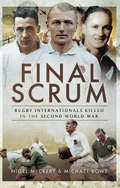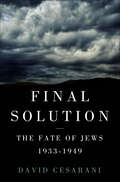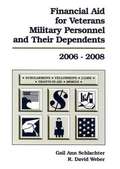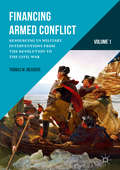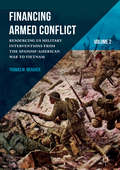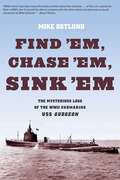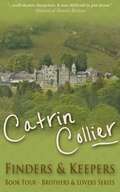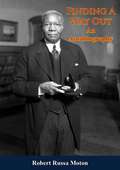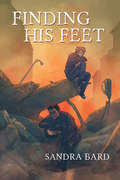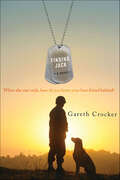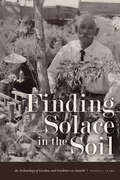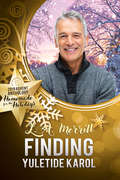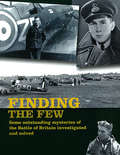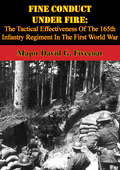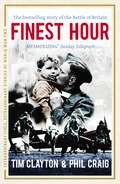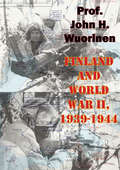- Table View
- List View
Final Scrum: Rugby Internationals Killed in the Second World War
by Nigel McCreryAfter the terrible losses of The Great War, twenty years later the Second World War resulted in the death of some of the finest sporting icons. This book honors the ninety International Rugby players who lost their lives. Fifteen were Scottish, fourteen English, eleven Welsh and eight Irish. Australia and New Zealand suffered with ten and two Internationals killed respectively and France eight. Germany topped the list with nineteen. In the same way that the Authors best-selling Into Touch remembered the 130 Internationals lost in the First World War, Final Scrum gives an individual biography of each of the ninety with their international and club playing record as well as their backgrounds, details of their military careers and circumstances of their death. We learn where they are buried or commemorated together with at least one photograph of each player.Rugby enthusiasts will find this book a fascinating and moving record of the sacrifice of the finest young men of their generation who fought in the second worldwide conflict of the 20th Century.
Final Siege (The Love Over Duty Novels #2)
by Scarlett Cole"Cole is a genius at weaving together heart-racing, suspenseful moments with scorching intimacy and real characters." - USA TodayHard, hot, and exhilarating, a sexy ex-Navy SEAL and a headstrong investigative journalist get a second chance at love in Final Siege by Scarlett Cole.IN THE LINE OF FIRE. Former SEAL Malachai “Mac” MacCarrick is all about the future he’s created with his Navy brothers in Eagle Securities, taking assignments in the most dangerous places, and doing things no one but ex-military would attempt. But when an urgent phone call brings his troubled past—and the woman he once loved—into the present, it’s a chance to redeem himself that he can’t refuse. STRAIGHT TO THE HEART... An investigative journalist researching an explosive story, Delaney Shapiro tells herself she got over Mac—and his role in her brother’s death—a long time ago. But the first moment she sees him at her bedside in an overseas hospital, she knows it’s not true. Every moment together rekindles the desire that once burned between them, and now that she’s a target for an emerging Russian arms dealer, Mac won’t let her out of his sight. To protect her, he’ll risk it all—including his life… “Non-stop action and heart-pounding romance...a must-read for romantic suspense fans!” —Cynthia Eden, New York Times and USA Today bestselling author on Under Fire
Final Solution: The Fate of Jews, 1933–1949
by David CesaraniDavid Cesarani’s Final Solution is a magisterial work of history that chronicles the fate of Europe’s Jews. Based on decades of scholarship, documentation newly available from the opening of Soviet archives, declassification of Western intelligence service records, as well as diaries and reports written in the camps, Cesarani provides a sweeping reappraisal that challenges accepted explanations for the anti-Jewish politics of Nazi Germany and the inevitability of the “final solution.” The persecution of the Jews, as Cesarani sees it, was not always the Nazis’ central preoccupation, nor was it inevitable. He shows how, in German-occupied countries, it unfolded erratically, often due to local initiatives. For Cesarani, war was critical to the Jewish fate. Military failure denied the Germans opportunities to expel Jews into a distant territory and created a crisis of resources that led to the starvation of the ghettos and intensified anti-Jewish measures. Looking at the historical record, he disputes the iconic role of railways and deportation trains. From prisoner diaries, he exposes the extent of sexual violence and abuse of Jewish women and follows the journey of some Jewish prisoners to displaced persons camps. David Cesarani’s Final Solution is the new standard chronicle of the fate of a heroic people caught in the hell that was Hitler’s Germany.
Final Verdict: What Really Happened in the Rosenberg Case
by Walter SchneirA new narrative of the famed case that finally solves its remaining mysteries, by the author of the bestselling Invitation to an Inquest. Walter and Miriam Schneir's 1965 bestseller Invitation to an Inquest was among the first critical accounts of the controversial case of Julius and Ethel Rosenberg, famously executed in 1953 for passing atom bomb secrets to Soviet Russia. In Invitation the Schneirs presented exhaustive and damning evidence that key witnesses in the trial had changed their stories after coaching from prosecutors, and that the FBI had forged evidence. The conclusion was unavoidable: The Rosenbergs were innocent. But were they? Thirty years after the publication of Inquest, Walter Schneir was back on the case after bits and pieces of new evidence started coming to light, much of it connecting Julius Rosenberg to Soviet espionage. Over more than a decade, Schneir continued his search for the truth, meeting with former intelligence officials in Moscow and Prague, and cross checking details recorded in thousands of government documents. The result is an entirely new narrative of the Rosenberg case. The reality, Schneir demonstrates, is that Rosenbergs ended up hopelessly trapped: prosecuted for atomic espionage they didn't commit--but unable to admit earlier espionage activities during World War II. As it happened, Julius Rosenberg was only marginally involved in the atomic spy ring he was depicted as leading--while Ethel, critically, was not at all involved. The two lied when the contended they knew nothing about espionage. Ethel knew about it and Julius had practiced it, but the government's contention that they had stolen the "secret" of the atom bomb was critically and fatally flawed.
Final Warning: Averting Disaster in the New Age of Terrorism
by Robert Kupperman Jeff KamenIn a prescient study of terrorist acts, Kupperman and Kamen detail the similarities between different acts of terrorism and provide advice about countering such threats.
Final Wicket: Test and First Class Cricketers Killed in the Great War
by Nigel McCreryWhile cricket remains a national game today, at the beginning of the Twentieth Century, it was THE national game. Cricketers were the sporting icons of their age, as footballers are today.When the call to arms was made in 1914 and the years of war that followed, it was answered in droves by young men including Test and First Class cricketers. The machine guns and gas of the Western Front and other theatres did not discriminate and many hundreds of these star performers perished alongside their lesser known comrades. The author has researched the lives and deaths of over 200 top class cricketers who made the ultimate sacrifice. He includes not just British players but those from the Empire. The enormity of the horror and wholesale loss of life during The Great War is well demonstrated by these moving biographies.
Financial Aid for Veterans, Military Personnel and Their Dependents 2006-2008
by R. David Weber Gail Ann SchlachterVeterans, military personnel, and their dependents make up more than one third of America's population. Each year, public and private agencies set aside billions of dollars in financial aid for these groups (including the spouses, children, grandchildren, and dependent parents, and siblings of veterans and military personnel). If you have ties to the military, Financial Aid for Veterans, Military Personnel, and Their Dependents is the right book for you.
Financing Armed Conflict, Volume 1
by Thomas M. MeagherThis first part of a two-volume series examines in detail the financing of America's major wars from the American Revolution to the Civil War. It interweaves analyses of political policy, military strategy and operations, and war finance and economic mobilization with examinations of the events of America's major armed conflicts, offering useful case studies for students of military history and spending policy, policymakers, military comptrollers, and officers in training.
Financing Armed Conflict, Volume 2
by Thomas M. MeagherThis second part of a two-volume series examines in detail the financing of America's major wars from the Spanish-American War to the Vietnam War. It interweaves analyses of political policy, military strategy and operations, and war finance and economic mobilization with examinations of the events of America's major armed conflicts, offering useful case studies for students of military history and spending policy, policymakers, military comptrollers, and officers in training.
Find 'Em, Chase 'Em, Sink 'Em: The Mysterious Loss of the WWII Submarine USS Gudgeon
by Mike OstlundNow in paperback, revised and updated, the stirring and authoritative account of one of World War II's most highly decorated submarines Find &’Em, Chase &’Em, Sink &’Em is the first book to recount the tragic and mysterious loss of the World War II submarine USS Gudgeon. In April 1944, the highly decorated submarine USS Gudgeon slipped beneath the waves in one of the most treacherous patrol areas in the most dangerous military service during World War II. Neither the Gudgeon nor the crew was ever seen again.Author Mike Ostlund&’s &“Uncle Bill,&” the operator of a farm implements business, was aboard that ship as a lieutenant junior grade. Through extensive research of patrol reports in U.S. and Japanese naval archives, interviews with veterans who had served aboard the Gudgeon before its final patrol, and the personal effects of the lost men&’s relatives, Ostlund has assembled the most accurate account yet of this remarkably successful submarine&’s exploits, of the men aboard from steward to captain, and of what we now know about her demise. Find &’Em, Chase &’Em, Sink &’Em details the memories and life lessons of the young men who went to sea aboard Gudgeon before its last patrol knowing hardly anything, and came home having seen too much.
Find, Fix, Finish: Inside the Counterterrorism Campaigns that Killed bin Laden and Devastated Al Qaeda
by Aki Peritz Eric RosenbachTwo intelligence experts with unique access to inside sources reveal the fascinating story behind the evolution of AmericaOCOs new, effective approach to counterterrorism
Finders and Keepers
by Catrin CollierThe first instalment of Catrin Collier's The Tsar's Dragons tells the epic historical saga based on the true story of how John Hughes, a lowborn, illiterate Welshman, founded Russia's iron industry on the steppes of the Ukraine. In 1869 John Hughes travelled to Russia at the invitation of Tsar Alexander II to build an ironworks and instigate the industrialization of Russia. Not everyone welcomes John and the Tsar's plans. Necessity forces Count Nicholas Beletsky to sell John land, although he abhors 'dirty' industry and is furious when son Alexei reveals his ambition to become an engineer. The Jews, who live apart in their shtetl, refuse to believe that John's plans will halt the persecution of their race. The Cossacks in the village of Alexandrovka, soon to be swallowed by John's new town, queue to sell John their land and coal mines that have been worked in the same primitive fashion or centuries. Undeterred, John signs up workers in Wales, but not all leave in search of fortune. Some, like brother and sister Richard and Anna Parry, are running to escape violence. Will they, and John's right-hand man Glyn, find the peace they search for in John's visionary new town?
Finding A Way Out: An Autobiography
by Robert Russa MotonFrom slave to successor to Booker T. Washington as head of the Tuskegee Institute is a personal story of an African-American and his struggles during the Ante-Bellum years.Robert Russa Moton was born in Amelia County, Virginia, on August 26, 1867, and was raised in nearby Rice, Prince Edward County, Virginia. He was the grandson of an African chieftain who had grown wealthy by engaging in slave trading. Later this chief was himself sold into slavery, leading to the establishment of Moton's family in the Americas shortly thereafter.In 1915, after the death of Booker T. Washington, Moton succeeded Washington as the second principal of the Tuskegee Institute. While supporting the work-study program, he emphasized education, integrating liberal arts into the curriculum, establishing bachelor of science degrees in agriculture and education. He improved courses of study, especially in teacher training, elevated the quality of the faculty and administration, constructed new facilities, and significantly increased the endowment by maintaining his connections to wealthy white benefactors in the North.
Finding Candidate Options for Investment
by Justin Beck Paul K. Davis Russell D. Shaver Gaga GvineriaDescription of a methodology and a prototype tool, Building Blocks To Composite Options Tool (BCOT), for identifying investment options for defense capability areas. It ensures that a broad range of options is considered initially, then uses a screening technique to narrow the range to those meriting more-extensive assessment in a fuller portfolio-analysis framework. BCOT extends classic economics and operations-research techniques and suggests pragmatic approximations, particularly in capabilities-based planning.
Finding His Feet
by Sandra BardKaden Pace, a soldier injured while on a mission, hides the extent of his damage by wearing his high-tech armor, desperate to prove his worth to his administrators and make himself useful in order to hold on to his independence. But during a simple assignment to escort two cadets across the country to retrieve the armor of a dead warrior, things start to fall apart. They meet Shun, a young man with a secret, who steals the armor they were supposed to recover. Chasing Shun brings them to an abandoned town, where they encounter even more trouble. Stranded in the deserted city, Kaden finds himself relying more and more on Shun, the person he'd come to capture, while fighting off an invasion from the neighboring country. But even when he returns to camp, Kaden's problems are not over. Now he has to find a way to save Shun, whom he's growing to care for, and keep his team alive as they make one last-ditch attempt to get back the armor Shun stole. Armor that is now in enemy hands, on an island in the middle of the sea, at Ground Zero where it all began.
Finding Jack: A Novel
by Gareth CrockerWhen the war ends, how do you leave your best friend behind? After losing his young family in a tragic accident, Fletcher Carson joins the flagging war effort in Vietnam. Deeply depressed, he plans to die in the war. But during one of his early missions, Fletcher rescues a critically wounded yellow Lab whom he nurses back to health and names Jack. As Fletcher and Jack patrol and survive the forests of Vietnam, Fletcher slowly regains the will to live. At the end of the war, the U.S. Government announces that due to the cost of withdrawal, all U.S. dogs serving in the war have been declared "surplus military equipment" and will not be transported home. For the hundreds of dog handlers throughout Vietnam, whose dogs had saved countless lives, the news is greeted with shock and disbelief. For Fletcher, he knows that if he abandons Jack, then he too will be lost. Ordered to leave Jack behind, he refuses—and so begins their journey. Based on the actual existence and abandonment of canine units in Vietnam, Gareth Crocker's Finding Jack is a novel of friendship and love under desperate circumstances that will grab your heart and won't let go.
Finding Solace in the Soil: An Archaeology of Gardens and Gardeners at Amache
by Bonnie J. ClarkFinding Solace in the Soil tells the largely unknown story of the gardens of Amache, the War Relocation Authority incarceration camp in Colorado. Combining physical evidence with oral histories and archival data and enriched by the personal photographs and memories of former Amache incarcerees, the book describes how gardeners cultivated community in confinement. Before incarceration, many at Amache had been farmers, gardeners, or nursery workers. Between 1942 and 1945, they applied their horticultural expertise to the difficult high plains landscape of southeastern Colorado. At Amache they worked to form microclimates, reduce blowing sand, grow better food, and achieve stability and preserve community at a time of dehumanizing dispossession. In this book archaeologist Bonnie J. Clark examines botanical data like seeds, garden-related artifacts, and other material evidence found at Amache, as well as oral histories from survivors and archival data including personal letters and government records, to recount how the prisoners of Amache transformed the harsh military setting of the camp into something resembling a town. She discusses the varieties of gardens found at the site, their place within Japanese and Japanese American horticultural traditions, and innovations brought about by the creative use of limited camp resources. The gardens were regarded by the incarcerees as a gift to themselves and to each other. And they were also, it turns out, a gift to the future as repositories of generational knowledge where a philosophical stance toward nature was made manifest through innovation and horticultural skill. Framing the gardens and gardeners of Amache within the larger context of the incarceration of Japanese Americans and of recent scholarship on displacement and confinement, Finding Solace in the Soil will be of interest to gardeners, historical archaeologists, landscape archaeologists, cultural anthropologists, and scholars of Japanese American history and horticultural history.
Finding Yuletide Karol (2019 Advent Calendar | Homemade for the Holidays #7)
by L.A. MerrillFifty years ago, during the Vietnam War, Lee Elbridge fell in love with an Army cook nicknamed Yuletide Karol, but they haven’t seen each other since. Now, led by a clue in an old cookbook, Lee sets off on a road trip to find his lost love. He arrives on Karol's upstate New York farm to find preparations for a handfasting in full swing, and is mistaken for the wedding planner’s assistant. As Lee is roped into folding hemp napkin goats and mashing fresh sweet potatoes, he is welcomed by Karol's large, eccentric family of witches and pagans. When Lee and Karol finally get a moment alone, Lee tells him the truth, but it will take more than a little Yuletide magick to bring them together again after almost a lifetime.A story from the Dreamspinner Press 2019 Advent Calendar "Homemade for the Holidays."
Finding the Fallen: Outstanding Aircrew Mysteries of the First World War to Desert Storm Investigated and Solved
by Andy SaundersThe author of Finding the Few presents more stories of lost airmen and the dedicated detective work done to find them. Mysteries involving missing aircrew span almost the entire twentieth century. Starting with a reappraisal of the famed story of pilot Edward &“Mick&” Mannock, the author of this book highlights the fates of RAF, USAF, and Luftwaffe personnel from bomber, reconnaissance, and fighter crews. Each case is examined with a microscopic and forensic approach worthy of a CSI episode, and evaluates the detective work involved in unraveling these long-unsolved disappearances of lost airmen. In many cases, there is a satisfactory conclusion in which family members can feel some closure—while in others, question marks are left hanging over. These fascinating stories remind us of the heroic ongoing efforts to truly live up to the phrase &“no man left behind.&”Includes photos
Finding the Few: Some Outstanding Mysteries of the Battle of Britain Investigated and Solved
by Andy SaundersAn &“extraordinarily researched&” account of a quest to find MIA fighter pilots decades after World War II (Barrett Tillman). 1940: The air over Britain is filled with danger. Courageous and heroic men fly and fight, often sacrificing their lives to keep the nation free. Some of them will disappear into the summer sky without leaving a trace . . . This remarkable book records the lives of RAF pilots who were shot down and remained missing for decades—until diligent research efforts by author Andy Saunders and others brought identification to them and closure to their families. Each case represents a fascinating human story of drama, love, and tragedy; these stories are filled with startling detective work, remarkable coincidences, and shocking controversy. Finding the Few ends with a mystery still unsolved, and features photographs throughout, standing as a fitting testament to those men lost but not forgotten.
Fine Conduct Under Fire: The Tactical Effectiveness Of The 165th Infantry Regiment In The First World War
by Major David G. FivecoatRecent historiography has almost universally denounced the tactical prowess of the American Expeditionary Force. However, a detailed analysis of the performance of the 42nd Division's 165th Infantry Regiment tells a surprisingly different story. Despite the challenges of the First World War battlefield, the 165th Infantry Regiment compiled a remarkable record of tactical effectiveness in its 180 days of combat. During its six campaigns, the regiment repeatedly held the line and seized objectives against veteran German units in a variety of situations and under various conditions. At the regimental level, a de facto adoption of trench warfare doctrine enabled the unit to synchronize the combined arms and avoid the doctrinal dysfunction the plagued the majority of the AEF. At the tactical level, the Irish platoons and companies rapidly became adept at using Indian-style or infiltration tactics to advance, seize terrain, and destroy German positions. In addition, superb leadership throughout the regiment and stellar unit cohesion played significant roles in the unit's superior tactical proficiency. In sum, these four factors enabled the 165th to achieve a level of tactical effectiveness second to none among the non-regular regiments of the AEF and equal to the best units within the German Army.
Finest Hour: The bestselling story of the Battle of Britain (Extraordinary Lives, Extraordinary Stories of World War Two #3)
by Phil Craig Tim ClaytonSeventy years ago, Europe lay at Hitler's feet. Britain faced its darkest hour - outnumbered and friendless as the German army continued its advance. Defeat or capitulation seemed inevitable. But instead a legend was born. Taking its readers on a breathtaking journey from open lifeboats in Atlantic gales to the cockpits of burning fighter-planes, and through cities devastated by the Blitz, FINEST HOUR recreates the terror, the tragedy and the triumph of the Battle of Britain. This powerful account of the events of 1940 is told through the voices, diaries, letters and memoirs of the men and women who lived, loved, fought and died during this terrible yet inspiring year. FINEST HOUR blends original historical research with the experiences of ordinary people in desperate times. Cutting through the nostalgic haze, this book enables readers to experience a time - still within living memory - when a nations's darkest hour became its finest.
Finishing Business: Ten Steps to Defeat Global Terror
by Harlan K. UllmanUllman examines the underlying causes and political motivations that drive global terrorism. He analyzes the attraction that Jihadist Extremism holds for disaffected Muslims around the world and argues that American governance is currently not up to the task of keeping the nation safe. He then describes ten concrete steps America can take to defeat global terror. Ullman is a columnist for the Washington Times.
Finland And World War II, 1939-1944
by Prof. John H. WuorinenFinland gained its independence from Russia in 1917 during the turmoil of the Russian Civil War, and ever since the communist leaders cast envious eyes toward their former domain; only waiting for a chance to invade. With the rise of Hitler's Germany the face of Europe changed, agreements were reached between the Soviets and the Nazis in brutally dividing up a nigh-defenceless and the detente culminated in the Non-Aggression Pact of 1939. This gave Stalin and his cohorts a chance to expand their borders, whilst Hitler looked west at France and Britain, by launching an attack directed to recapture their former Grand Duchy. Thus started Finland's participation in the Second World War. This book eloquently recounts the stubborn resistance of the Finns against the Soviet attack during the Winter War, the horrific siege of Leningrad and the Finns brave bid to retain its independence from Soviet dominance. The manuscript for the book was smuggled out of Soviet controlled Finland in late 1945, it was passed to Professor Wuorinen who skilfully edited and annotated the work into its present form.A fascinating sidelight on a little known corner of the brutal Second World War.
Finland at War 1939-45
by Raffaele Ruggeri Philip JowettIn the face of Soviet invasion in 1939-40, and once again in 1941-44, the armies raised by Finland - a tiny nation of only 4 million people - astonished the world by their effective resistance. At the end of both these campaigns - the Winter War, and the Continuation War - the fiercely patriotic defiance of vastly stronger Soviet forces by Marshal Mannerheim's soldiers won their country a unique prize: although forced to accept harsh terms, Finland was never occupied by the Red Army, and retained its independence. This book explains and illustrates, for the first time in English, the organization, uniforms, equipment and tactics of Finland's defenders.
